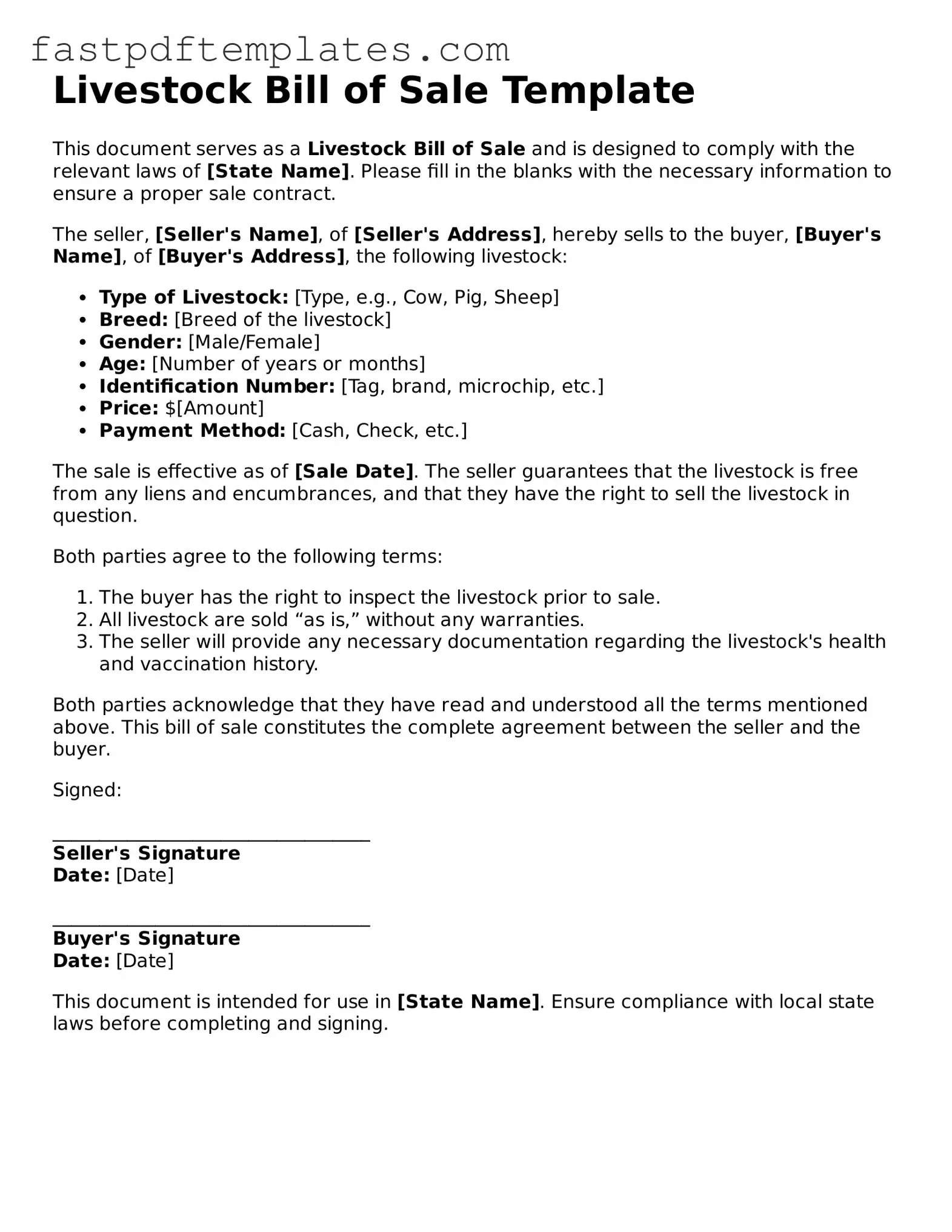The Livestock Bill of Sale form is similar to a Vehicle Bill of Sale, which is used when transferring ownership of a car or other motor vehicle. Both documents serve the purpose of formally recording the sale and transfer of ownership from the seller to the buyer. They typically include details such as the names and addresses of both parties, a description of the item being sold, and the sale price. Just like the Livestock Bill of Sale, the Vehicle Bill of Sale acts as a legal document that can be used for future reference or in case of disputes.
Another document that shares similarities is the Equipment Bill of Sale. This form is utilized when selling or purchasing equipment, such as machinery or tools. Much like the Livestock Bill of Sale, it includes essential details about the buyer and seller, a description of the equipment, and the agreed-upon price. Both documents help protect the interests of both parties by providing a clear record of the transaction.
The Boat Bill of Sale is also comparable to the Livestock Bill of Sale. When someone buys or sells a boat, this document outlines the transaction and ensures that ownership is officially transferred. Similar to the livestock form, it includes vital information such as the names of the buyer and seller, a detailed description of the boat, and the sale price. This helps to clarify ownership and can be useful for registration purposes.
In the realm of real estate, a Real Estate Purchase Agreement bears resemblance to the Livestock Bill of Sale. This document outlines the terms of a property sale, including the buyer and seller’s information, property details, and the purchase price. While the subject matter differs, both documents aim to provide a clear and legally binding record of a transaction, ensuring that all parties understand their rights and obligations.
The Firearm Bill of Sale is another document that functions similarly to the Livestock Bill of Sale. When buying or selling a firearm, this form is used to document the transfer of ownership. It contains information about the buyer and seller, a description of the firearm, and the sale price. Both documents serve to protect the interests of the parties involved and provide a legal record of the transaction.
A Business Asset Bill of Sale is also akin to the Livestock Bill of Sale. This document is used when selling or purchasing business assets, such as inventory or equipment. It includes similar details, such as the names of the parties, a description of the assets, and the sale price. Both documents aim to ensure a smooth transfer of ownership and protect the rights of both the buyer and seller.
The Mobile Home Bill of Sale is another document that parallels the Livestock Bill of Sale. This form is used when transferring ownership of a mobile home. It contains information about the buyer and seller, a detailed description of the mobile home, and the sale price. Just like the livestock form, it serves as a legal record of the transaction, helping to clarify ownership and protect both parties involved.
Lastly, the Personal Property Bill of Sale is similar to the Livestock Bill of Sale in that it is used for the sale of various personal items, such as furniture or collectibles. This document includes the names of the buyer and seller, a description of the item, and the sale price. Both forms provide a clear record of the transaction, ensuring that both parties are aware of their rights and responsibilities following the sale.
